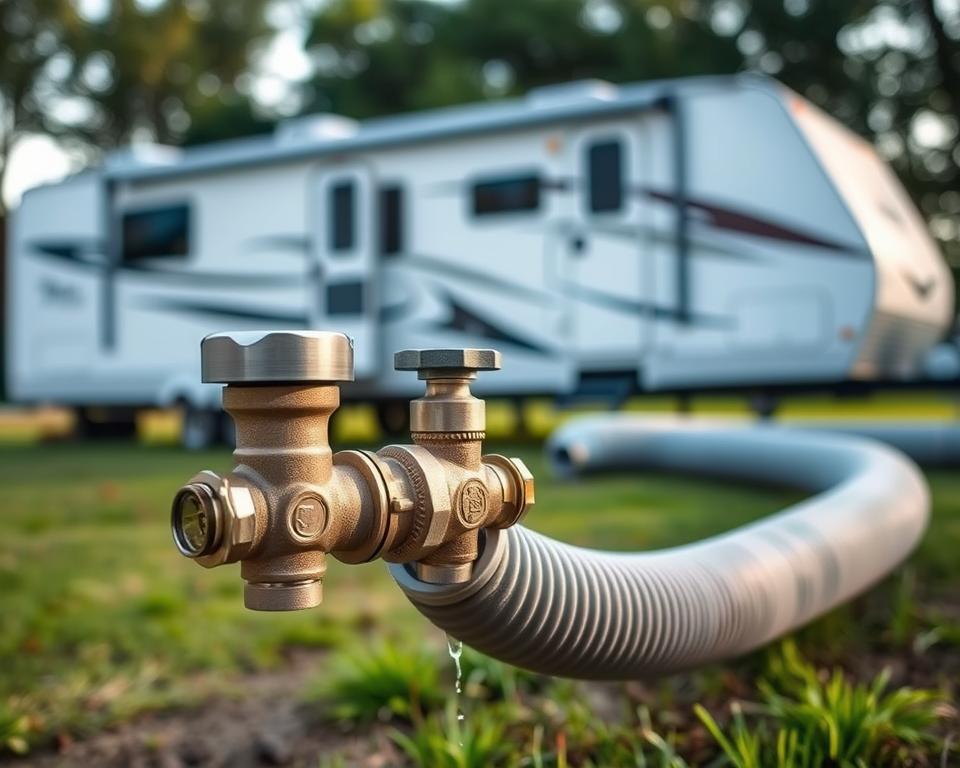Sewage Tank Cleaning – Crucial Upkeep Advice
Did you know nearly half of wastewater systems malfunction ahead of time because of insufficient care? This fact shows how essential sewage reservoir sanitizing and maintenance are for property owners. Ensuring your septic system working well is vital for treating greywater and avoiding pricey adjustments later.
Learning about your sewage tank’s elements and how to upkeep them can help you avoid common mistakes. Working with specialists like All In Area Services can give you the support you need to keep your system running smoothly. We’ll cover important maintenance tips that every property owner should know.
Comprehending the Importance of Wastewater Tank Scrubbing
Understanding how septic tanks work is crucial to keeping sewage systems running well. These tanks let greywater in and divide it. Heavy stuff sinks to the bottom, making residue. Floatable substances like oils and grease float on top, making froth. Then, the fluid refuse goes to the leach field for organic sifting through the ground, 24 hour septic service near me.
This system needs consistent maintenance to work right.
How Septic Tank Operates
A working sewage tank is essential for treating wastewater. It decomposes debris with anaerobic bacteria, making the liquid safe for the soakaway field. Checking the container often helps keep an eye on sediment and froth levels. This keeps the tank running smoothly.
Without upkeep, the tank’s stability can get messed up, leading to issues later.
Outcomes of Neglecting Maintenance
Not taking care of septic structures can lead to big issues. Disregard can cause blockages, spilling sewage into homes or the surroundings. This is dangerous for health and can taint the water table.
Routine inspections on sewage tanks are crucial to catching troubles early. This helps avoid big repairs and keeps the sewage unit safe.
Recommended Frequency for Septic Tank Pumping
The interval of septic tank pumping is vital for the system’s health. Understanding what determines this frequency helps homeowners keep their sewage tanks in good shape. Crucial aspects include the reservoir capacity, the number of individuals living there, and the category of garbage.
Aspects Determining Draining Schedule
- Scale of the septic tank: Larger reservoirs can hold more garbage, so they might not need pumping as often.
- Occupant count: More people mean more waste, so emptying might be needed more often.
- Types of waste: If there’s a lot of solid or difficult-to-decompose waste, the unit might get obstructed, needing draining sooner.
Common Draining Schedules
Generally, septic tanks should be pumped every triennially to quinquennially to work well. For a residence with a family of four and a thousand-gallon reservoir, draining every triennially is a good rule. This keeps sediment amounts under control, making sure sewage sludge removal works right and the system runs smoothly.
Sewage Tank Cleaning: Essential Maintenance Tips
Ensuring your wastewater tank in good shape is key to its smooth operation. Understanding when it needs scrubbing can save you from pricey adjustments and make it last longer.
Signs Your Container Needs Scrubbing
- Delayed drainage in basins and lavatories
- Unpleasant odors around the sewage area
- Surprisingly green or green grass in your garden, possibly indicating cracks
- Backups in your drains
- Frequent gurgling noises from pipes
Standard Scrubbing Techniques
There are several ways to scrub your septic tank and keep it running well. Here are some effective methods:
-
Hand Emptying: This technique uses vacuum trucks to clear sludge from the container.
-
High-Pressure Water Jetting: This technique uses high-pressure water to unclog pipes and clean the tank.
-
Organic Supplements: These substances help process debris in the reservoir, making it more efficient.
| Cleaning Method | Effectiveness | Cost | Schedule |
|---|---|---|---|
| Mechanical Draining | High | Expensive | Annually to Triennially |
| Powerful Water Blasting | Moderate | Reasonable | When required |
| Natural Enhancers | Moderate | Affordable | Four times a year |
Having a good plan for scrubbing your septic tank will help it work better and last longer. Consistent care with conduit sanitizing can keep your structure running well and avoid future challenges.
Best Practices for Waste Disposal in Sewage Structures
Knowing how to dispose of waste properly is vital to a healthy wastewater unit. It’s vital for keeping your unit running well and making your septic tank last longer. Many people don’t know what not to throw away, which can cause big issues and expensive fixes.
Materials to Keep Out
Be careful with what you dispose of down the lavatory. Materials like nappies, dental floss, grease, and cat litter can clog wastewater units. These materials don’t break down and can clog conduits, leading to blockages. This means you might need to empty your tank more often or even call for urgent assistance.
Understanding what you can safely throw away can help avoid these issues.
The Effect of Waste Grinders
Waste grinders might seem handy, but they add a lot of dense refuse to your sewage tank. This means you might need to drain your tank more often if you use them a lot. To keep your wastewater unit safe, try to use your grinder less and follow good garbage handling habits.



